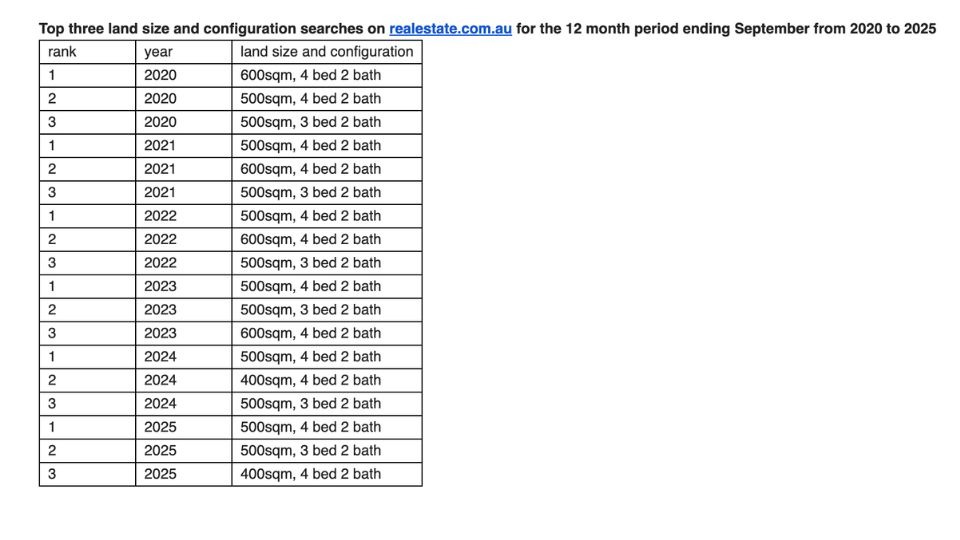The average block size of Australian homes is shrinking, and buyers are adjusting their expectations accordingly.
New data from PropTrack shows that the median land area of sold houses has steadily declined over the past decade, falling from 670sqm in 2015 to 645sqm in 2025, which is a drop of nearly 4%.
This gradual reduction is largely driven by population growth and the need to maintain housing affordability.
Since 2015, Australia’s population has increased by around 15%, according to the Australian Bureau of Statistics, with projections indicating another 16% rise over the next decade.
As demand for housing continues to rise, particularly in major cities where land is constrained, developers have increasingly opted for smaller lots to keep homes within financial reach.
Zoning reforms introduced by several state governments have also played a role.
Policies aimed at increasing density in areas close to public transport and amenities have led to more townhouse and duplex developments – typically built on subdivided blocks.
These planning changes have accelerated the pace of decline in urban areas compared with regional ones, where larger parcels of land remain more common.
Search data from realestate.com.au reveals that buyer preferences are mirroring this trend.
In 2020, the most searched property configuration was a four-bedroom, two-bathroom home on a 600sqm block, followed by a 500sqm, four-bedroom home, and a 500sqm, three-bedroom home.

From 2021 onwards, the 500sqm, four-bedroom, two-bathroom configuration took the top spot and has held it since.
By 2024 and 2025, the once-coveted 600sqm block had fallen out of the top three searches, replaced by a 400sqm, four-bedroom, two-bathroom home; a sign that buyers have shifted their expectations towards more compact lots.
This change reflects both availability and affordability.
With fewer large blocks being developed, prices for them have increased, prompting many buyers to prioritise modern features and internal space over land size.
While block sizes have declined, house interiors have remained relatively stable.
Data from the Australian Bureau of Statistics shows that the average floor area of a newly built detached house is around 241sqm, consistent with figures recorded over the past decade.
This suggests that while Australians are accepting smaller yards, they are not compromising on indoor space.
Developers are instead focusing on maximising internal layouts, offering open-plan living, additional bathrooms, and multipurpose rooms, even as the land footprint contracts.
Over the next decade, experts anticipate continued urban infill and further reductions in average land sizes.
As semi-detached dwellings and smaller-lot housing become more common, detached homes will likely sit on increasingly compact parcels of land.
However, despite these spatial shifts, Australians’ preference for spacious, functional interiors is expected to persist.
The traditional backyard may be shrinking, but the desire for comfortable, well-designed living spaces remains unchanged.

